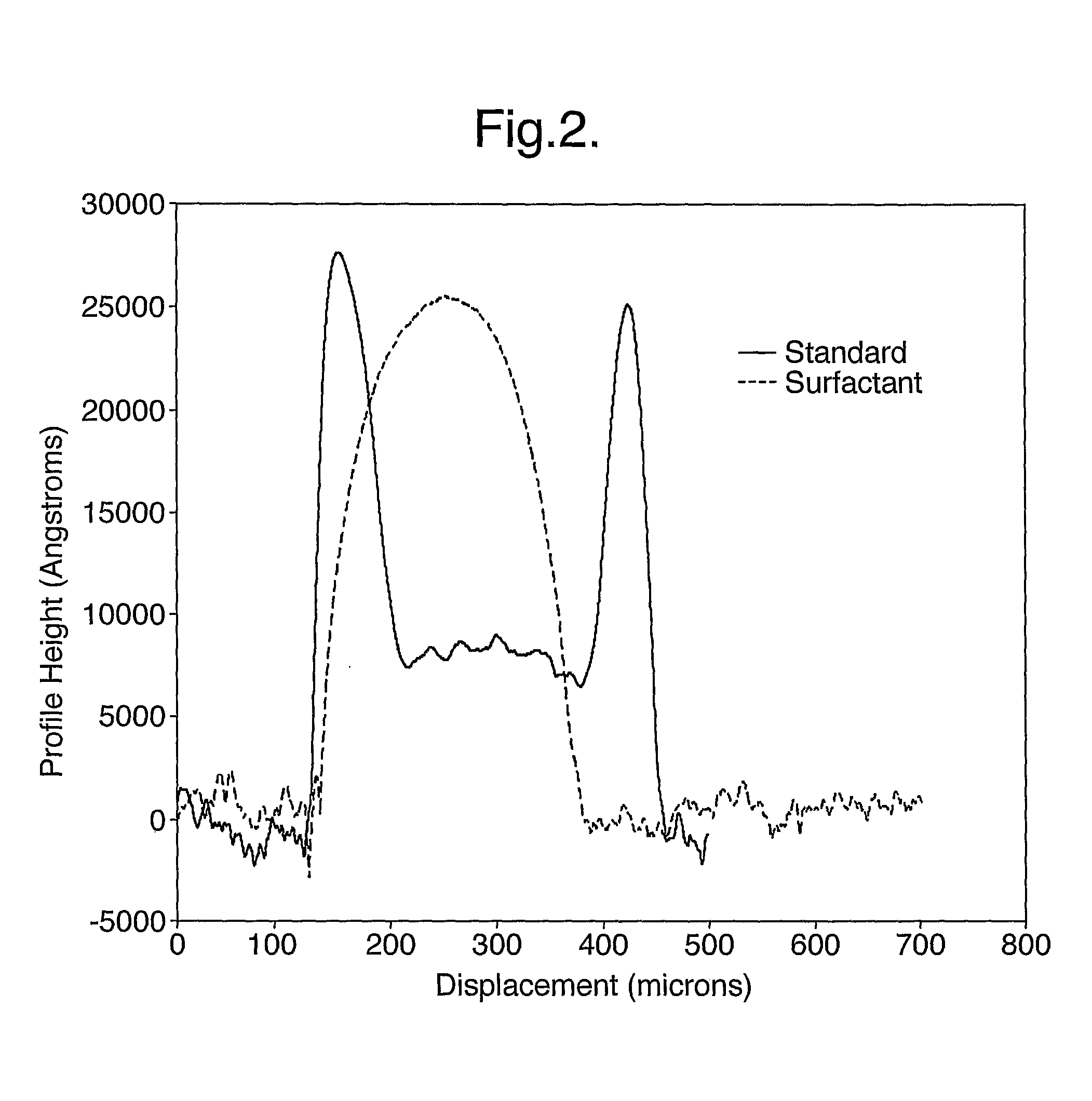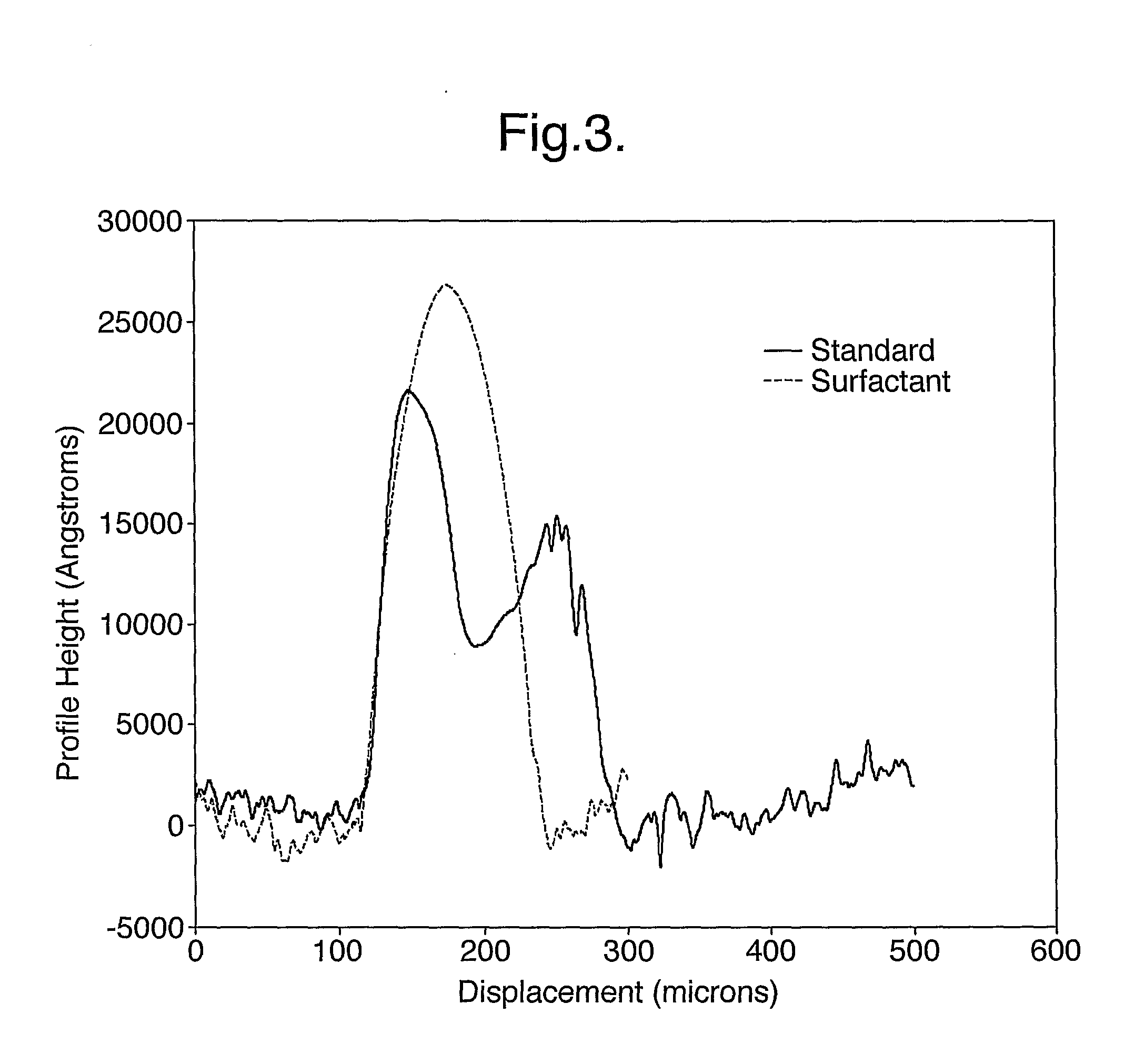Formation of layers on substrates
- Summary
- Abstract
- Description
- Claims
- Application Information
AI Technical Summary
Benefits of technology
Problems solved by technology
Method used
Image
Examples
example 2
[0060]In order to better quantify the boundary between improved wetting and reduced line widths in different inks, the surfactant BYK333 was added to several different liquids and the contact angle of the liquid with and without the surfactant was examined on Melinex 339 polyester substrate. Since the polar nature of a solvent can be related to its surface tension (with more polar liquids having higher surface tension), the liquids were ranked in order of surface tension as shown in Table 4 below.
TABLE 4Surface tension@ 20° C. inNamemN / mWater72.8Ethylene glycol47.7Polyethylene43.5glycol 300 (PEG)N-methyl-2-40.79pyrrolidone(NMP)Diacetone30.9Alcohol (DAA)
[0061]In all cases 0.3% (w / w) of BYK 333 surfactant was added to a sample of the liquid and drops of the liquid with and without the surfactant were placed on Melinex 339 polyester. In the case of water, ethylene glycol and polyethylene glycol 300, wetting was improved by the addition of the surfactant and the contact angles for the d...
PUM
| Property | Measurement | Unit |
|---|---|---|
| Percent by mass | aaaaa | aaaaa |
| Surface tension | aaaaa | aaaaa |
| Surface tension | aaaaa | aaaaa |
Abstract
Description
Claims
Application Information
 Login to view more
Login to view more - R&D Engineer
- R&D Manager
- IP Professional
- Industry Leading Data Capabilities
- Powerful AI technology
- Patent DNA Extraction
Browse by: Latest US Patents, China's latest patents, Technical Efficacy Thesaurus, Application Domain, Technology Topic.
© 2024 PatSnap. All rights reserved.Legal|Privacy policy|Modern Slavery Act Transparency Statement|Sitemap



